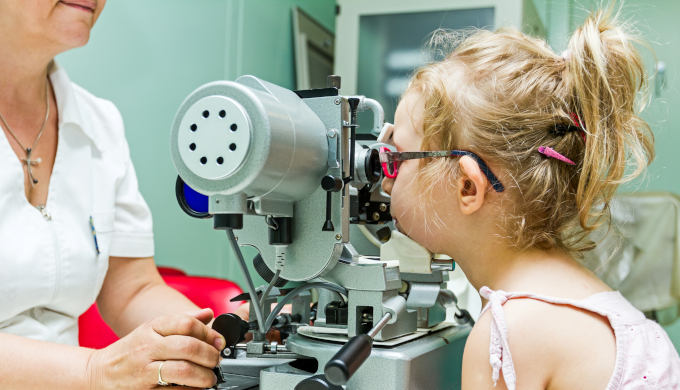Author: Eleanor McDermid
medwireNews: Children using nightly atropine eyedrops have a significantly lower incidence of myopia during 2 years of use than those using placebo, show the findings of the LAMP2 randomised trial.
“Further research is needed to replicate the findings, to understand whether this represents a delay or prevention of myopia, and to assess longer-term safety”, write Jason Yam (The Chinese University of Hong Kong) and co-researchers in JAMA.
They add: “The participants in this study are currently in their third year of follow-up, with the total intended follow-up duration of 6 years to evaluate a longer-term effect.”
The team tested atropine at doses of 0.05% and 0.01%, but only the former resulted in a significant reduction in myopia rates (cycloplegic spherical equivalent of at least −0.50 D in either eye) compared with placebo eyedrops.
The 116 children using atropine 0.05% had a 2-year cumulative myopia incidence of 28.4%, compared with 53.0% in the 125 children using placebo. The 122 using 0.01% atropine had an intermediate incidence of 45.9%.
Likewise, the rates of fast myopic shift were 25.0% versus 53.9% in the atropine 0.05% versus placebo groups, and 45.1% in the atropine 0.01% group.
In line with these findings, the average myopic shifts in spherical equivalent with atropine 0.05% versus placebo were –0.46 versus –1.01 and the average axial length elongations were 0.48 versus 0.70.
The participating children were aged 4–9 years and had a cycloplegic spherical equivalent between +1.00 and 0.00 D, astigmatism of less than –1.00 D, anisometropia of less than 2.00 D and one or more parents with a cycloplegic spherical equivalent of at least −3.00 D.
Atropine eyedrops were well tolerated. Photophobia was the most common complaint, but this was reported at similar rates in the atropine 0.05% and placebo groups, at 12.9% and 12.2%, respectively.
In a linked editorial, David Berntsen (University of Houston, Texas, USA) and Jeffrey Walline (Ohio State University, Columbus, USA) note that earlier age of myopia onset is linked to severity of myopia in adulthood.
“Thus, delaying the age of myopia onset has the potential to reduce how myopic the person becomes, although this will need to be confirmed in long-term studies”, they say.
The editorialists echo the authors’ point that it is not yet clear whether atropine can reduce the incidence and/or severity of myopia, or simply delays it.
And they add: “It is also unknown whether decreasing the myopic shift in refractive error and eye growth by initiating treatment prior to myopia onset amplifies the benefit or whether a similar reduction can be achieved by initiating treatment early after onset.”
News stories are provided by medwireNews, which is an independent medical news service provided by Springer Healthcare Ltd. © 2023 Springer Healthcare Ltd, part of the Springer Nature Group
This independent news story was supported by an educational grant from L’Institut Servier, Suresnes, France.
Image Credits: © Roman_23203 / stock.adobe.com



